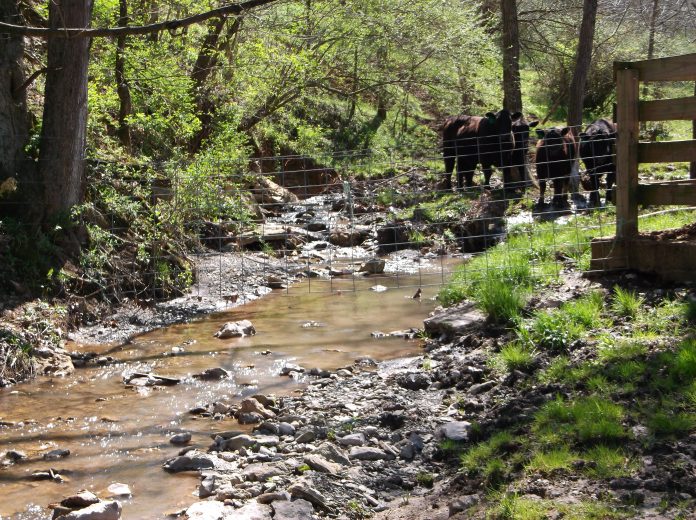As I drive around the area, I see many opportunities for farmers to put conservation on the land.
One of the simplest conservation practices to install and one that would have the most beneficial environment impact is exclusion fence. This practice could keep tons of soil and nutrients from entering local streams, but it is one of the toughest practices to convince people to install. It does not seem to matter if we talk to livestock producers about the benefits of fencing animals out of a stream or a woodlot, they just do not want to do it. Some say it is too much work; others feel the animals need a place to cool off, and some do not want to give up using that sliver of land.
Looming regulations
The days of allowing livestock to have full access to streams are numbered. It does not matter if it is equine, bovine, swine or a llama: as more regulations are set and the importance of clean water is emphasized, this will become unacceptable. Regulations and laws are already in place in other states and even in other counties in Ohio for that matter to keep livestock excluded from streams. It may be time to visit with your local soil and water office to start the planning if this is an issue on your farm.
By involving your local SWCD office, you can plan the fencing along with alternative watering sources and stream crossings to help facilitate moving the livestock. This type of planning and infrastructure may even assist with the beginnings of managed grazing on certain farms. Managed or rotational grazing can help grow more forage, cut your fertilizer costs and provide better quality water for your livestock.
Public image issues
If the looming livestock regulations nor the idea of greener, healthier pastures are not enough incentive to fence off streams, let me ask you this: what is your public image worth? As more people become less connected to the livestock industry, they do not understand that sometimes mud cannot be avoided. What they do comprehend is that the dirty water is entering streams, filling up rivers and lakes, and potentially impacting their drinking water. They also see livestock that are in an environment that they determine unfit because of the presence of mud and manure.
We all know that with today’s technology it does not take very long for someone’s “concerns” to be sent to an office or agency with regulatory authority. Once that call is made or text is sent, a farmer or livestock owner can expect a visit from the local SWCD. So, would it not be worth having a buffer along the stream to avoid such a matter?
With the proper planning and a little bit of management, conservation practices can make dramatic improvements not only to the quality of water running through your farm but to the aesthetics of the landscape as well. Farmers and livestock owners must be proactive instead of reactive to make these types of changes. Fortunately, there are programs and incentives to assist in paying for conservation best management practices. Your local SWCD office will know what sources of funding are available in your area.














I’m fully aware how cattle can cause soil loss and dowbstream pollution but observing the fencing off of a small section of a stream in my locality has caused me to wonder about unwanted side effects. The vegetation that grew up behind the fence not only choked the stream but was dominated by the highly invasive Himalayan balsam. Maybe restricting the animals to sheep and limiting the grazing periods would be a suitable alternative to fencing?